Bridgeman Says Ownership Will Be ‘Labor of Love’
Oprah Shrinks Stake in OWN for More of Discovery
NBC Report Leads to Public Housing Protections
New Village Voice Owner is Hispanic but Few Know
‘Hollowed Out a Generation of Young Black Men’
Utah Students to Report on the Marginalized
News Media Collaborate on ‘Broke in Philly’
A New Federal Writers’ Project Could Provide Jobs
L.A. Critics Choose Film on Black Britain
TV Series Planned on Killing of Vincent Chin
Homepage photo credit: Sports Illustrated
“This NBA player has a higher net worth than LeBron, Shaq, and Kobe — but he wasn’t even a star in the NBA,” Andy Hoops says in this 2017 video on Ulysses “Junior” Bridgeman. (Credit: YouTube)
Bridgeman Says Ownership Will Be ‘Labor of Love’
A bid to buy Ebony Media Holdings by a company headed by former NBA player Ulysses “Junior” Bridgeman was approved Tuesday by a U.S. Bankruptcy Court in Houston, a court spokesperson told Journal-isms.
Bridgeman — who starting in the 1970s played for 10 seasons with the Milwaukee Bucks and two with the Los Angeles Clippers — had bid about $14 million, Becky Yerak reported Monday for The Wall Street Journal.
“Bridgeman said he expects Ebony to remain a digital publication, with occasional special print issues,” Robert Channick reported Tuesday in the Chicago Tribune. “He said the business plan is still being formulated and that his children will be responsible for managing the company.
“ ‘When you look at Ebony, you look at the history not just for Black people, but of the United States,’ Bridgeman said. ‘I think it’s something that a generation is missing and we want to bring that back as much as we can.’ ”
The entrepreneur told Channick, “Nothing is ever easy, but this would be, I think, a labor of love.”
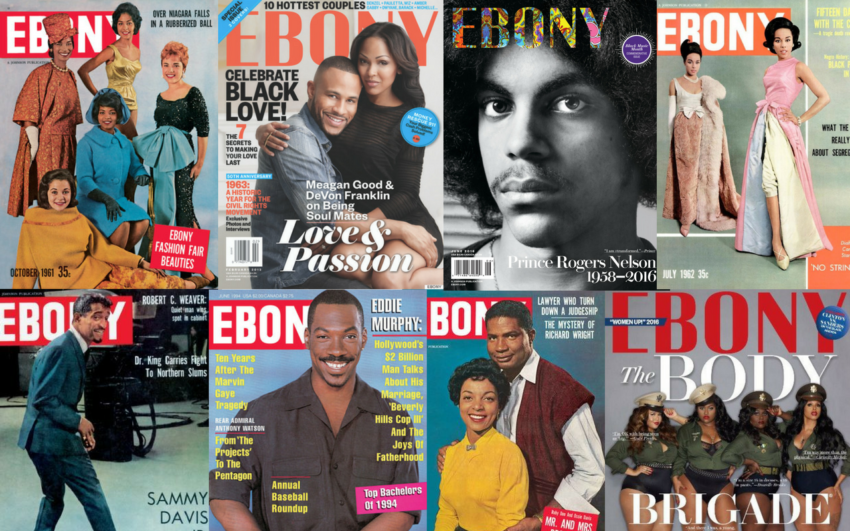
Channick wrote, “Ebony was forced into Chapter 7 bankruptcy in July by its creditors after defaulting on more than $10 million in loans. The bankruptcy was converted to a voluntary Chapter 11 reorganization in September.”
Yerak also reported that Bridgeman “said his daughter, Eden, would be active in the business, which would bring in an outside manager to help oversee it.”
Yerak continued, “Last July the owner of its namesake magazine was forced into bankruptcy by Parkview Capital Credit and other creditors that said they wanted to take over the publication, which has chronicled Black culture for 75 years but has fallen on hard times.
“The involuntary bankruptcy came weeks after Ebony’s main shareholder was fired as chief executive and removed from the board. The company said it would investigate financial transactions he had made, allegedly without board or lender approval.
“Ebony stopped publishing in print in 2019. The company’s assets consist mostly of intellectual property, including Ebony and Jet trademarks, the related domain names and websites, and certain legacy published materials,” wrote Yerak. A consortium of foundations led by the J. Paul Getty Trust last year planned to buy the historic Ebony photo archives for $30 million, with plans to donate the expansive collection and make it available for broad public access.
Channick added, “Despite Ebony’s recent financial troubles, Bridgeman, 67, said he believes he can return it to profitability with ‘the right ideas and the right execution.’ . . .
“Bridgeman, who spent most of his 12-year basketball career with the Milwaukee Bucks, became a successful fast-food restaurant franchisee after retiring from the NBA in 1987. He sold his restaurant interests and in 2017 launched Heartland Coca-Cola Bottling Co., a Kansas-based facility whose distribution territory includes Kansas, Missouri, and Southern Illinois.
“In 2019, Bridgeman dropped efforts to buy Sports Illustrated from Meredith, which subsequently sold the magazine to Authentic Brands Group for $110 million. . . .”
- Andrew Lawrence, Sports Illustrated: Junior Bridgeman trades baskets for large portfolio of restaurants (Aug, 1, 2014)
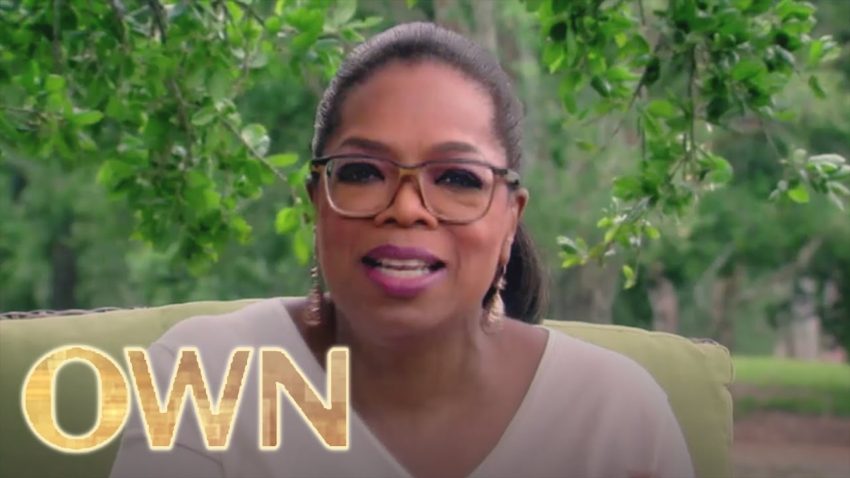
Oprah Shrinks Stake in OWN for More of Discovery
“Oprah Winfrey has taken a stake of $35 million-plus in Discovery Inc. as part of a deal that boosts the factual content giant’s holding in OWN, a joint venture with Winfrey’s Harpo, sources tell The Hollywood Reporter,” Georg Szalai and Alex Weprin wrote Tuesday for the publication.
“Discovery and Harpo’s original deal to form OWN in 2008 included options for Harpo to sell its stake to the content company, and Discovery has been increasing its OWN stake over time. According to Discovery’s 2008 annual report, Winfrey had a put agreement that would require Discovery to buy out a portion or all of her stake in OWN that was set to expire at the end of this year.
“The new deal increases Discovery’s ownership in OWN from 73 percent to 95 percent, according to a source familiar with the situation. That person said Winfrey elected to swap most of Harpo’s interest in OWN for voting Series A shares in Discovery.
“Winfrey continues to serve as CEO and chief creative officer of OWN, though she now owns only a 5 percent stake in it. A rep for Harpo and OWN declined to comment. . . .”
NBC wrote on May 23, 2019, “At least 13 people have died from carbon monoxide in federally subsidized housing since 2003, according to an NBC News investigation, but HUD does not currently require working carbon monoxide detectors in public housing. This is the story of HUD residents Anthony and Gwendolyn Fleming, from Wayne, Michigan, who died in February 2019, and their daughters, who are fighting for justice.” (video)
NBC Report Leads to Public Housing Protections
“Congress has passed a requirement for carbon monoxide alarms in federally subsidized housing — the first time that the federal government would mandate these safety devices in public housing, following years of incidents in which the poisonous gas seeped into residents’ homes and left them hospitalized or dead,” Suzy Khimm reported Tuesday for NBC News.
“The provision was included as part of the $900 billion Covid-19 relief bill that cleared the House and Senate on Monday night, and follows an in-depth NBC News investigation into carbon monoxide deaths in public housing. President Donald Trump is expected to sign the bill into law in the coming days.
“NBC News found last year that at least 13 public housing residents had died from the colorless, odorless gas since 2003. Housing units funded by the Department of Housing and Urban Development must be ‘decent, safe, and sanitary’ and are subject to regular health and safety inspections, but the federal government did not require carbon monoxide detectors. . . .”
New Village Voice Owner is Hispanic but Few Know
Brian Calle has been described in many ways, as a right-wing activist, libertarian, gay and ethically suspect but Hispanic isn’t usually one of them.
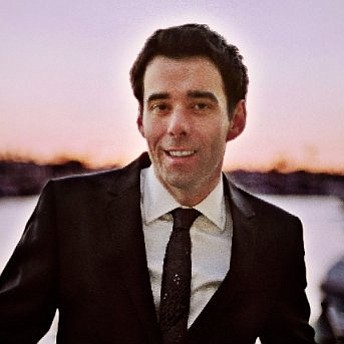 Calle (pictured) is CEO and Publisher of Street Media, parent company of L.A. Weekly, which announced Tuesday it would revive New York’s Village Voice.
Calle (pictured) is CEO and Publisher of Street Media, parent company of L.A. Weekly, which announced Tuesday it would revive New York’s Village Voice.
“We plan to honor the rich history of this paper and build an innovative revenue model that brings it long-term sustainability,” Calle said in announcing the move in the L.A. Weekly. “There are no easy answers or silver bullets in running a media company today, but these institutions are too important for us not to try.”
Calle is also a former editorial page editor of the Orange County Register, which has a libertarian tradition. He was also just one of five self-identified Hispanic opinion page editors in mainstream media in a 2013 survey.
Asked about that then, he messaged this columnist, writing for the Association of Opinion Journalists, “For me, and my road to my position, I’ve been embraced every step of the way. Most people do not realize I am Hispanic until we get into a discussion about my last name or I tell a story about myself so I did not endure any bumps and when people find out that I have some Latin roots they tend to get more excited and intrigued, if anything. I’d say what’s caused me the biggest bumps and stories is my age/youth.”
Calle was then about to turn 33.
Speaking with Katie Robertson of The New York Times Tuesday, Calle said he “planned to restart The Voice’s website in January and would publish a ‘comeback’ print edition early next year, with quarterly print issues to follow. On Tuesday he hired Bob Baker, a former Voice editor, as a senior editor and content coordinator. Mr. Calle said he wanted to bring back more former staff members who know the paper’s tone. He has not yet named an editor in chief.”
Many writers of color who worked at the Voice, which ceased publishing in 2018 after 63 years, have become prominent.
Some alums include Stanley Crouch, Joe Wood, Greg Tate, Lisa Jones, Nelson George, Thulani Davis, Colson Whitehead, Ed Gonzales, Jeff Yang, Peter Noel, Scott Poulson-Bryant, Amiri Baraka, Evette Porter, Ed Lee, Pablo Guzman, Ed Morales, Gary Dauphin, Jill Nelson, Lisa Jones, Carol Cooper, Hilton Als, Steven Thrasher and Ta-Nehisi Coates.
The Voice is digitizing its archives, “which date to 1955 when it was founded by a group that included author Norman Mailer“ (paywall), Lukas I. Alpert reported Tuesday for the Wall Street Journal. “Mr. Calle said the work is about 90% finished and once it is done, the archive would be donated to a public institution.”
“The unrelenting stress of fighting systemic racism can alter a body’s normal functioning until it starts to wear down. The theory, known as John Henryism, helps explain racial health disparities,” Pro Publica says. (video)
‘Hollowed Out a Generation of Young Black Men’
“While COVID-19 has killed 1 out of every 800 African Americans, a toll that overwhelms the imagination, even more stunning is the deadly efficiency with which it has targeted young Black men, ” Akilah Johnson and Nina Martin wrote Tuesday for ProPublica.
Under the headline, “How COVID-19 Hollowed Out a Generation of Young Black Men,” they wrote, “One study using data through July found that Black people ages 35 to 44 were dying at nine times the rate of white people the same age, though the gap slightly narrowed later in the year.
“And in an analysis for ProPublica this summer using the only reliable data at the time accounting for age, race and gender, from Michigan and Georgia, Harvard researcher Tamara Rushovich found that the disparity was greatest in Black men. It was a phenomenon Enrique Neblett Jr. noticed when he kept seeing online memorials for men his age. ‘I’ll be 45 this year,’ said the University of Michigan professor, who studies racism and health. “I wasn’t seeing 60- and 70-year-old men. We absolutely need to be asking what is going on here?”
“To help illuminate this gap in knowledge and gain a deeper understanding of why America has lost so many young Black men to COVID-19, ProPublica spent months gathering their stories, starting with hundreds of news articles, obituaries and medical examiners’ reports, then interviewing the relatives and friends of nearly two dozen men, along with researchers who specialize in Black men’s health. Our efforts led us to a little-known body of research that takes its name from one of the most enduring symbols of Black American resilience. . . .”

Utah Students to Report on the Marginalized
“The Salt Lake Tribune is teaming up with the nonprofit Amplify Utah to support student journalists at Salt Lake Community College who will report on Utah’s diverse communities and engage younger readers,” Becky Jacobs reported Dec. 15 for the Salt Lake Tribune.
“The yearlong project, which is funded through the Google GNI Innovation Challenge, was announced Tuesday. Students will begin reporting during the spring semester in 2021.
“ ‘We have students from every corner of society at a community college, and there’s just really deep rich stories that I don’t know we always have access to otherwise,’ said Marcie Young Cancio, executive director of Amplify Utah and an assistant professor of journalism and digital media at SLCC.
“Young Cancio — who’s a veteran newspaper reporter, magazine editor and digital and television news executive — founded Amplify Utah this past summer to increase diversity in local media. It will develop news readers through media literacy education and by amplifying underrepresented voices.
“Through her nonprofit and her position at SLCC, Young Cancio will work with students in an introductory journalism class. They will cover a broad range of diversity, equity and inclusion issues, including those that affect them personally as members of Utah’s Black, Latino, Native American, Pacific Islander, refugee, veteran, LGBTQIA+ and incarcerated communities. . . .
“According to SLCC, 31% of students at the school identify as minorities. The community college also serves refugees, immigrant ‘Dreamers’ brought to the country illegally as children, nontraditional students, veterans and incarcerated adults through programming offered at the Utah Prison System. . . .”
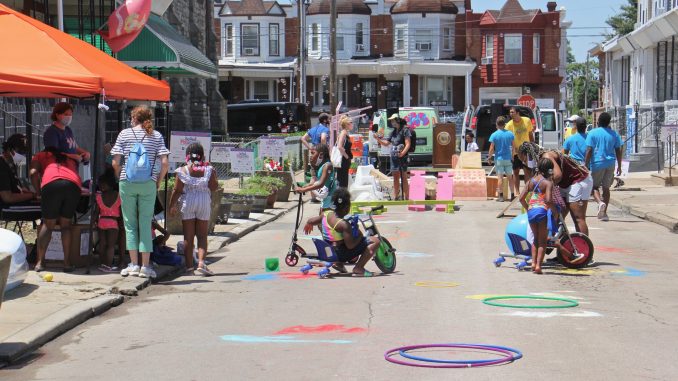
News Media Collaborate on ‘Broke in Philly’
Twenty-one Philadelphia news organizations are jointly producing “Broke in Philly,” “a collaborative reporting project on solutions to poverty and the city’s push toward economic justice.”
According to its website, “This effort is led by Resolve Philadelphia, a new hub for the city’s general interest, community and ethnic news organizations to produce collaborative solutions reporting and community engagement activities that address urgent social challenges.”
Some of the headlines: “COVID and catering: Philly workers describe maskless parties and high-risk gigs,”
“Why Philly shut down its homeless COVID hotels, and why advocates are furious,” “Immigrant Stories: Lisa Gwaikolo, Liberian American Essential Worker, Shares her COVID-19 Experience,” “Careda’s Caribbean Cuisine Soars Despite COVID-19 Turbulence,” and “OnWURD 2020 in Black: A Lifeline During COVID 19,”
Participants include Al Dia News, AccNews, Billy Penn, DosPuntos, ecoWURD, FunTimes, Generocity, Green Philly, Kensington Voice, Klein College of Media and Communication, Metro Philadelphia, NBC10/Telemundo62, Next City, One Step Away, The Philadelphia Citizen, The Philadelphia Inquirer, The Philadelphia Public School Notebook and Philadelphia Gay News.
Also, Philadelphia Magazine, Philatinos Radio, PhillyCAM, Philly Weekly, PlanPhilly, Technical.ly, WURD Radio and WHYY.
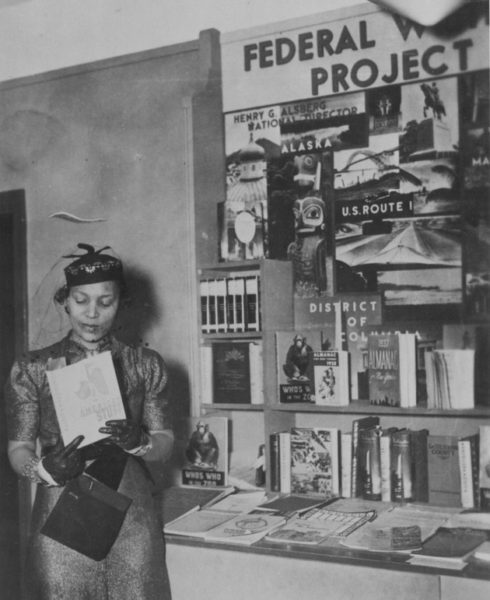
A New Federal Writers’ Project Could Provide Jobs
Does the COVID pandemic make it time to revive the New Deal program known as the Federal Writers’ Project?
Jon Allsop wrote Tuesday in Columbia Journalism Review about the program President Franklin D. Roosevelt’s administration founded under the aegis of its Works Progress Administration, “a relief program now best known for putting unemployed Americans to work building roads and bridges, but which also hired writers, actors, artists, and musicians — supporting creative labor while also launching programs in arts education, documentation, and performance. . . .”
Allsop added that the program commissioned hundreds of works, “from oral histories to ethnographies and collections of folklore. One staffer went on assignment to Puerto Rico, reporting back on the rise of fascism there. In Wisconsin, members of the Oneida Nation were employed to record the language and history of their community. In the course of their guidebook work, writers in various states spoke with formerly enslaved people, and their interviews inspired a separate, broader initiative: an archive of more than two thousand first-person narratives about slavery.”
He continued, “At its peak, the Writers’ Project employed more than six thousand people. Some of its hires — Zora Neale Hurston, John Cheever, Richard Wright, Saul Bellow, and Studs Terkel, among others— were celebrated, or would become so, but most qualified by dint of their economic circumstances. The result was an eclectic staff — ‘a mazy mass,’ as Time magazine put it, of ‘unemployed newspapermen, poets, graduates of schools of journalism who had never had jobs, authors of unpublished novels, high-school teachers, people who had always wanted to write,’ and so on.”
Allsop spoke with David Kipen, a writer and former director of literature at the National Endowment for the Arts who now teaches at UCLA.
 “After the pandemic hit, Kipen noticed the similarities between the period in which the original project was born and the present moment. ‘The situation of writers was not all that great to begin with — for years I’ve been saying the Great Depression is already here for writers,’ Kipen told me recently. ‘It hit me that maybe some reinvention of the project — which would put writers back to work but also reintroduce the country to itself, because it seems like half of America seems so clueless about the other half and vice versa — would serve a double benefit.’
“After the pandemic hit, Kipen noticed the similarities between the period in which the original project was born and the present moment. ‘The situation of writers was not all that great to begin with — for years I’ve been saying the Great Depression is already here for writers,’ Kipen told me recently. ‘It hit me that maybe some reinvention of the project — which would put writers back to work but also reintroduce the country to itself, because it seems like half of America seems so clueless about the other half and vice versa — would serve a double benefit.’
“Kipen started lobbying for a new Writers’ Project in opinion columns and letters to lawmakers. One US congressman — Rep. Ted Lieu (pictured), a California Democrat — wrote back to Kipen expressing interest in the idea, and now hopes to introduce a bill in the next Congress. . . . “
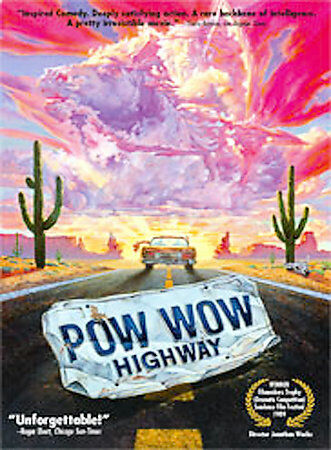
A Call to Excise ‘Powwow,’ ‘Low on Totem Pole’
“As a new year dawns, we can commit as an industry to elevate Indigenous issues further,” Doris Truong, director of training and diversity at the Poynter Institute, wrote as part of Nieman Lab’s look ahead at 2021.
“This starts by recognizing that Indigenous culture has been subjugated for centuries. The National Association of Science Writers was mindful of this during its virtual conference in October; sessions started with an acknowledgment of the tribes with historic claim to the land. We can each consider ways to incorporate land acknowledgments so they are true acts of allyship. As scholar Kyle Powys Whyte wrote, ‘One can’t claim to be an ally if one’s agenda is to prevent his or her own future dystopias through actions that also preserve today’s Indigenous dystopias.’
“We can recommit to providing opportunities for Indigenous journalists to succeed. Donate to the Native American Journalists Association’s Indigenous Voice Fund. Hire Indigenous journalists at all levels of experience and pay them a living wage. Don’t pigeonhole the work they do.
“And change can also occur in our everyday language. I’ve said it before and I’ll say it again: If you don’t work for the AP, you don’t have to wait for its style edicts. Do the research and update your organization’s style to center it on the perspectives of the people you cover. Revisit whether your organization perpetuates racialized mascots (in words and/or in images) and be more mindful to avoid phrases that misappropriate culture. Just a few examples to potentially excise from your vocabulary: spirit animal, powwow, low on the totem pole, part of the tribe, going off the reservation, circle the wagons.
“For journalists to effectively continue our role as society’s watchdogs, we need to spend a bit more time examining and fixing the gaps in our industry. We must intentionally elevate the voices that have not always been the loudest. That’s how we will be able to cover diverse communities authentically and further trust with our audiences.”
- Amara Aguilar, Nieman Lab: Journalism schools emphasize listening
- Danielle C. Belton, Nieman Lab: A decimated media rededicates itself to truth
- Loretta Chao, Nieman Lab: Open up the profession
- Tauhid Chappell and Mike Rispoli, Nieman Lab: Defund the crime beat
- Jennifer Choi, Nieman Lab: What have we done for you lately?
- Meredith D. Clark, Nieman Lab: The year journalism starts paying reparations
- Marissa Evans, Nieman Lab: Putting community trauma into context
- Cherian George, Nieman Lab: Enter the lamb warriors
- Robert Hernandez, Nieman Lab: Data and shame
- John Ketchum, Nieman Lab: More journalists of color become newsroom founders
- Marcus Mabry, Nieman Lab: News orgs adapt to a post-Trump world (with Trump still in it)
- Joanne McNeil, Nieman Lab: Newsrooms push back against Ivy League cronyism
- Christoph Mergerson, Nieman Lab: Black Americans will demand more from journalism
- Nabiha Syed, Nieman Lab: Newsrooms quit their toxic relationships

L.A. Critics Choose Film on Black Britain
“Steve McQueen’s ‘Small Axe,’ an anthology of five films centered on the lives of Black people in Britain, won best picture from the Los Angeles Film Critics Assn. on Sunday,” Glenn Whipp and Justin Chang reported Monday for the Los Angeles Times.
“It’s the first time the top prize has gone to a series, rather than an individual movie, and the selection spurred social media debate about the definition of film versus television (‘Small Axe’ is a joint production of the BBC and Amazon).
“If anything, it’s a sign of what a peculiar year 2020 has been. Some may ask why give out film awards at all for a year in which movie theaters were largely shut down and the major studios pushed pause on significant releases.
“But the L.A. critics responded with a robust list of cinematic achievements, doling out acting prizes to the late Chadwick Boseman and his ‘Ma Rainey’s Black Bottom’ costar Glynn Turman, ‘Minari’ scene stealer Yuh-Jung Youn and ‘Promising Young Woman’ star Carey Mulligan. Chloé Zhao was named best director for ‘Nomadland,’ while Amazon’s ‘Time’ won best documentary, Apple TV+’s ‘Wolfwalkers’ took best animated film and the Russian drama ‘Beanpole,’ a virtual cinema release, was the winner for foreign language film.
“Times critic Justin Chang and columnist Glenn Whipp, who are members of the L.A. organization, discussed the results via email after the vote. . . .”
- Ashley Clark, New York Times: In ‘Small Axe,’ Steve McQueen Explores Britain’s Caribbean Heritage (Nov. 11, updated Nov. 13)
- Jake Coyle, Associated Press: Steve McQueen unveils an anthology of racism and resistance (Oct. 2)
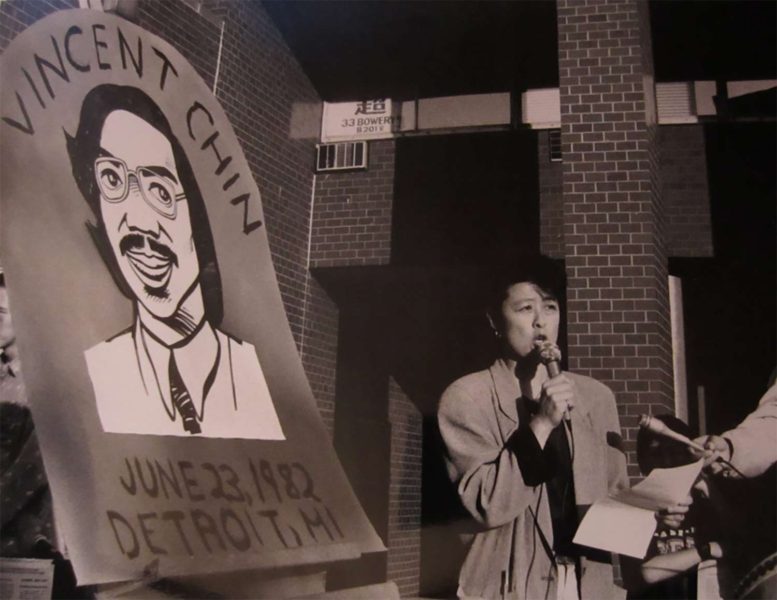
TV Series Planned on Killing of Vincent Chin
“Author, activist and journalist Helen Zia is developing a limited TV series on the landmark civil rights case about the 1982 murder of Chinese American Vincent Chin in Detroit, when the US was in the midst of a severe national recession following the collapse of the auto industry,” the Center for Asian American Media announced on Monday.
“Partnering with Zia are producers and respected artists’ advocates Paula Madison, Donald Young and Vicangelo Bulluck.”
The announcement continued:
“An award-winning author and journalist, Zia has long been urged to write the as-yet untold history behind the terrible hate crime and community efforts to right egregious wrongs.
“The baseball bat bludgeoning of Chin occurred when unfounded, rampant hate blamed Japan, and anyone who looked Japanese, for the collapse of the US auto industry. Vincent Chin, who was celebrating his upcoming wedding at a Detroit strip club, was racially targeted, stalked and beaten to death after his killer was heard to say, It’s because of you motherf–s that we’re out of work.”
The killing of Chin is said to be responsible for the concept of “Asian American.”
Writer Jay Caspian Kang explained in The New York Times in 2017, “The project of defining Asian-American identity was largely limited to Ivy League and West Coast universities until 1982, when Vincent Chin, who worked at an automotive engineering firm in Detroit, was beaten to death by assailants who blamed Japanese competition for the downturn in the American auto market.
“When Chin’s killers were sentenced to probation and fined $3,000, protesters marched in cities across the country, giving rise to a new Pan-Asian unity forged by the realization that if Chin, the son of Chinese immigrants, could be killed because of Japanese auto imports, the concept of an ‘Asian-American’ identity had consequences.”
To subscribe at no cost, please send an email to journal-isms+subscribe@groups.io and say who you are.
Facebook users: “Like” “Richard Prince’s Journal-isms” on Facebook.
Follow Richard Prince on Twitter @princeeditor
Richard Prince’s Journal-isms originates from Washington. It began in print before most of us knew what the internet was, and it would like to be referred to as a “column.” Any views expressed in the column are those of the person or organization quoted and not those of any other entity. Send tips, comments and concerns to Richard Prince at journal-isms+owner@
View previous columns (after Feb. 13, 2016).
View previous columns (before Feb. 13, 2016)
- Diversity’s Greatest Hits, 2018 (Jan. 4, 2019)
- Book Notes: Is Taking a Knee Really All That? (Dec. 20, 2018)
- Book Notes: Challenging ’45’ and Proudly Telling the Story (Dec. 18, 2018)
- Book Notes: Get Down With the Legends! (Dec. 11, 2018)
- Journalist Richard Prince w/Joe Madison (Sirius XM, April 18, 2018) (podcast)
- Richard Prince (journalist) (Wikipedia entry)
- February 2018 Podcast: Richard “Dick” Prince on the need for newsroom diversity (Gabriel Greschler, Student Press Law Center, Feb. 26, 2018)
- Diversity’s Greatest Hits, 2017 — Where Will They Take Us in the Year Ahead?
- Book Notes: Best Sellers, Uncovered Treasures, Overlooked History (Dec. 19, 2017)
- An advocate for diversity in the media is still pressing for representation, (Courtland Milloy, Washington Post, Nov. 28, 2017)
- Morgan Global Journalism Review: Journal-isms Journeys On (Aug. 31, 2017)
- Diversity’s Greatest Hits, 2016
- Book Notes: 16 Writers Dish About ‘Chelle,’ the First Lady
- Book Notes: From Coretta to Barack, and in Search of the Godfather
- Journal-isms’ Richard Prince Wants Your Ideas (FishbowlDC, Feb. 26, 2016)
- “JOURNAL-ISMS” IS LATEST TO BEAR BRUNT OF INDUSTRY’S ECONOMIC WOES (Feb. 19, 2016)
- Richard Prince with Charlayne Hunter-Gault,“PBS NewsHour,” “What stagnant diversity means for America’s newsrooms” (Dec. 15, 2015)
- Book Notes: Journalists Follow Their Passions
- Book Notes: Journalists Who Rocked Their World
- Book Notes: Hands Up! Read This!
- Book Notes: New Cosby Bio Looks Like a Best-Seller
- Journo-diversity advocate turns attention to Ezra Klein project (Erik Wemple, Washington Post, March 5, 2014)

